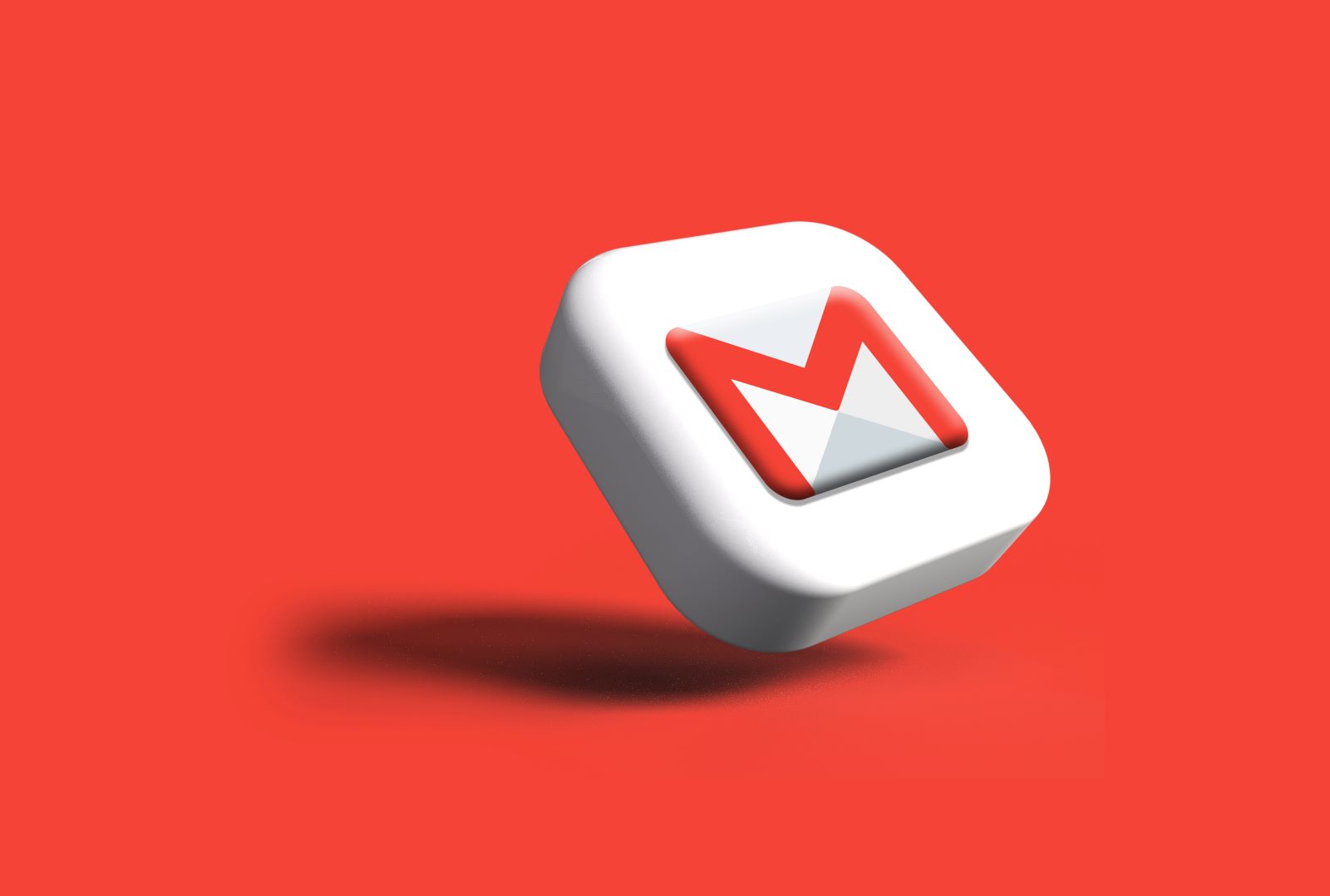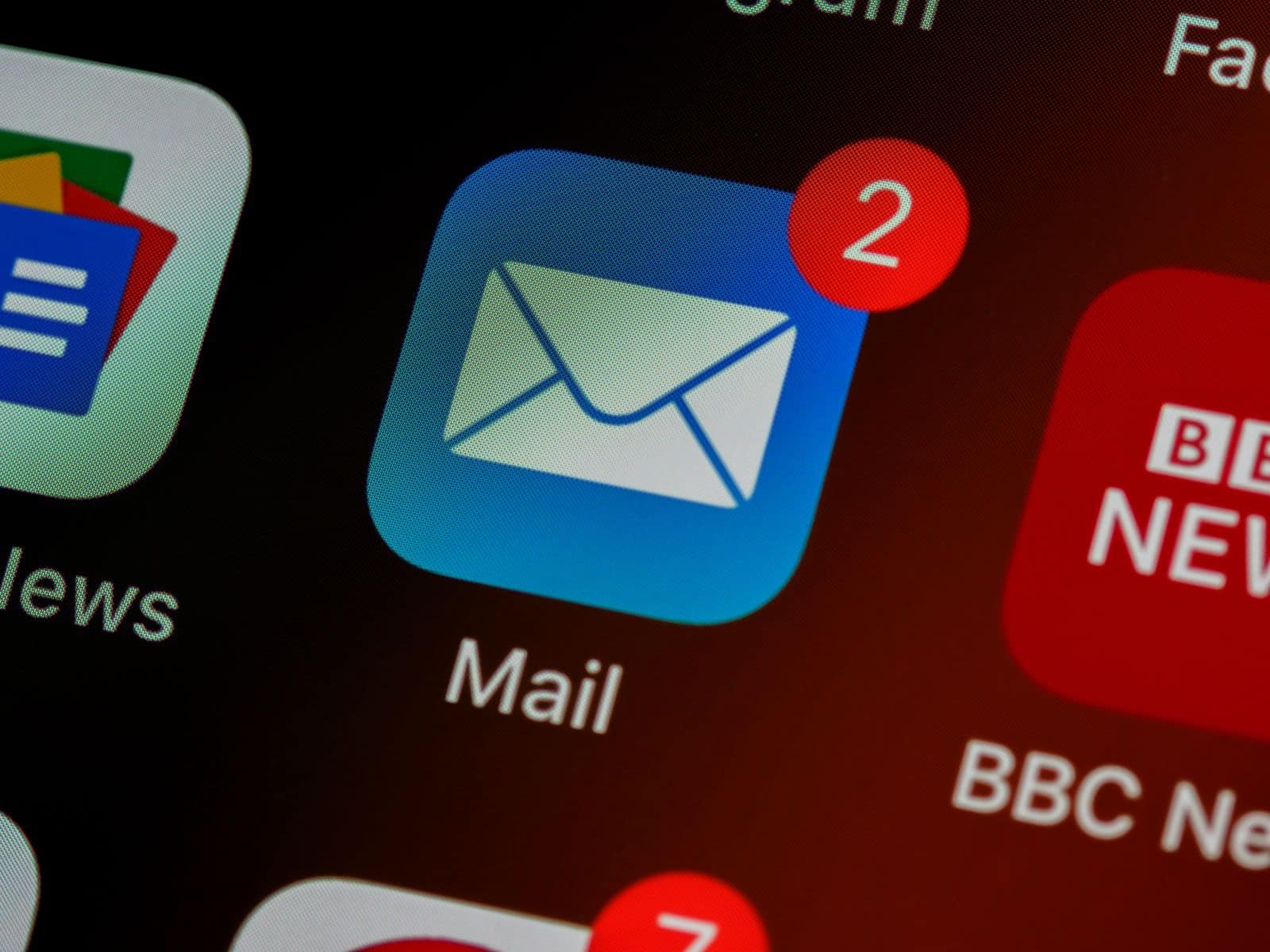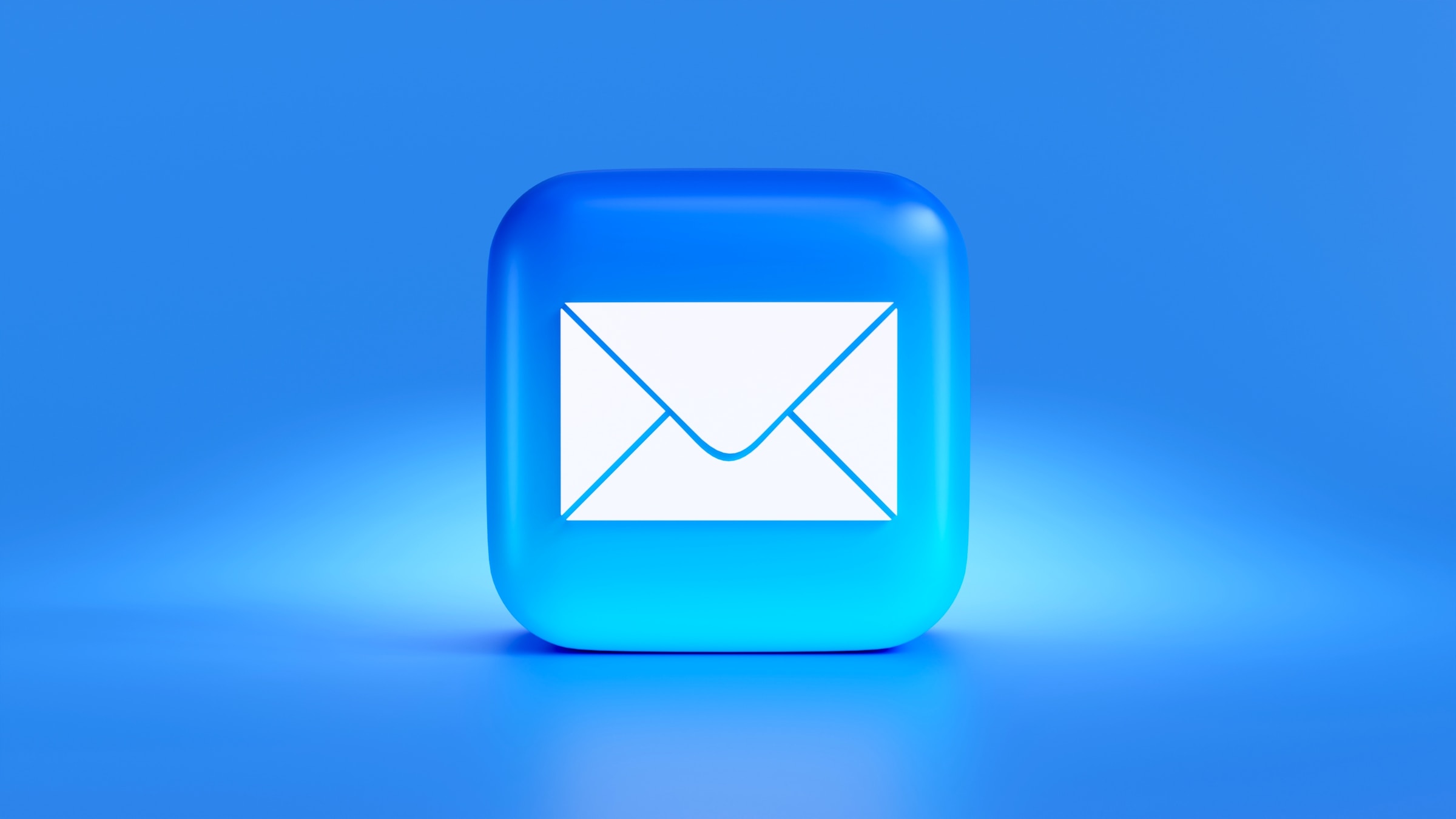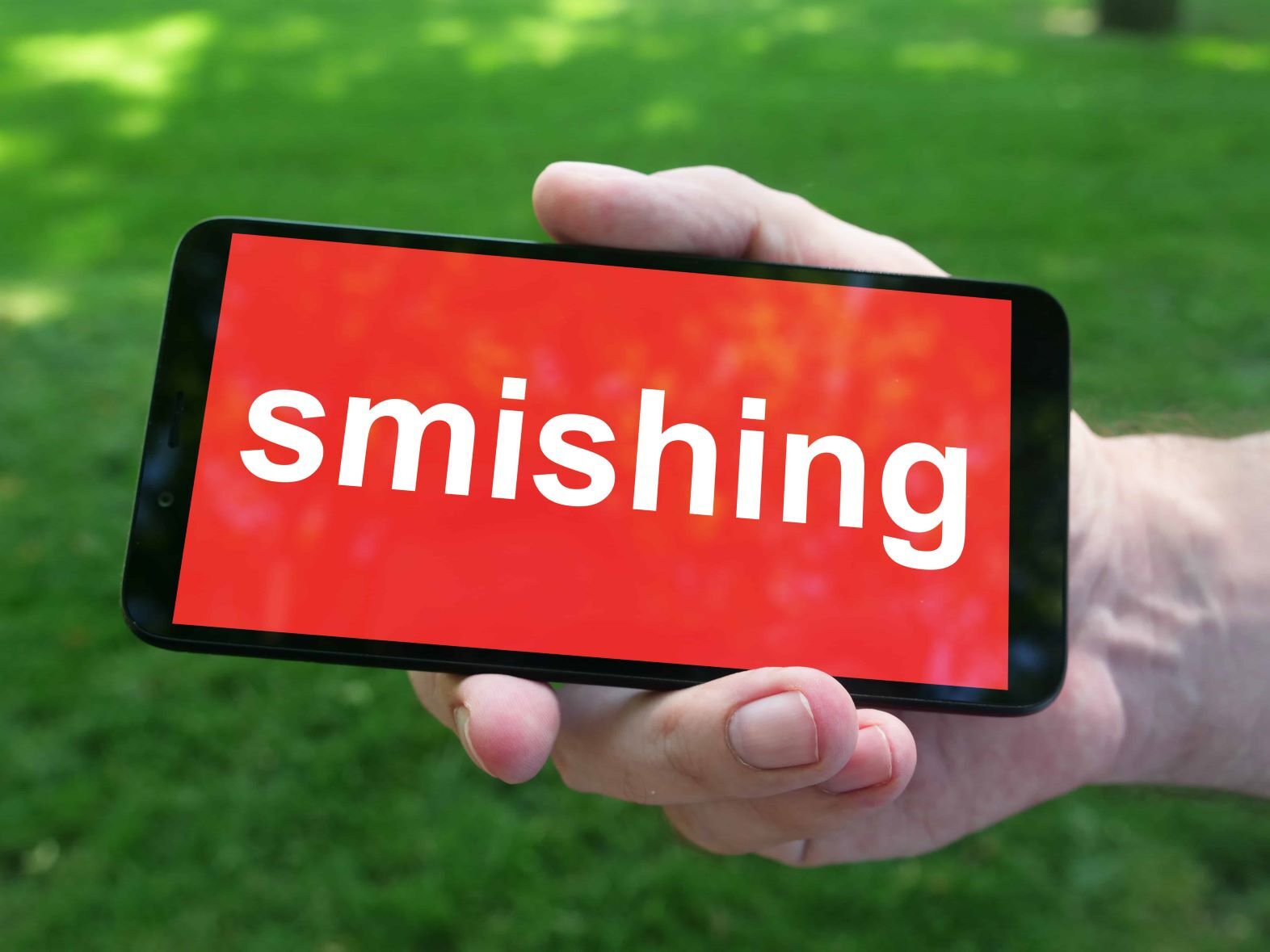Navigating Email Security Challenges: Trends of 2023 Show The Way Forward for 2024

Email Security 2024:Overcoming Challenges faced in 2023 Here are the top Email Security trends that we think will shape 2024. Get a Quote Download Datasheet Email Security > Navigating Email Security Challenges: Trends of 2023 Pave The Way Forward for 2024 As we progressed through 2023, the digital landscape witnessed a continuous evolution in email security threats. In 2024, these challenges are not just growing in number, but also in sophistication, making it imperative for businesses to adopt robust security measures. In this detailed exploration, we will uncover the trends that have defined email security in 2023 and share the comprehensive solutions that Topsec Cloud Solutions offers to counter these threats effectively in the next 12 months. By Cian Fitzpatrick | 18th January 2024 Topsec’s Key Email Security Trends Observed for 2023 Post-Delivery URL Threats The year marked a significant rise in URLs that initially appear safe but later transform into gateways to malicious websites. This sophisticated tactic evades conventional security measures, as the harmful nature of the URLs activates only after they have bypassed initial security screenings. This trend underscores the need for more dynamic, real-time security solutions capable of responding to threats as they evolve. In response to this challenge, Topsec’s URL Scanner offers a robust solution by providing real-time scanning of URLs. It effectively identifies and neutralizes threats even after the URLs have been initially cleared, ensuring continuous protection against these evolving cyber threats. Malicious File Shares Increasingly, attackers are embedding malicious content in shared files. These files often appear benign and pass through security checks unnoticed. Once opened, they can unleash malware or lead to data breaches. This trend highlights the need for more advanced file scanning technologies that can detect hidden threats within shared documents. OneDrive as a Delivery Method The trust placed in OneDrive, due to its integration with Windows, has been exploited by cybercriminals. They use it as a conduit for delivering malware, relying on the inherent trust users have in the platform. This method’s rise in popularity calls for more nuanced security measures that can differentiate between legitimate and malicious OneDrive links. In response to this growing threat, Topsec’s Office 365 Email Security Solutions offer robust protection mechanisms specifically designed to intercept and neutralize such threats before they reach users. By employing advanced scanning technologies, Topsec ensures that only safe, verified content is allowed through, enhancing the security of your digital communications within Office 365. Malicious QR Codes The use of QR codes in emails and attachments as a means to redirect users to harmful websites post-delivery has become more frequent. Known as quishing, these QR codes often change their destination URLs after passing initial security checks, making them a formidable threat to track and neutralise. Impersonation Scams The sophistication of impersonation scams has grown, with attackers expertly mimicking legitimate entities to deceive users. This trend has been exacerbated by the increased use of digital communication, making it harder to distinguish between genuine and fraudulent interactions. Lack of Proper Setup (SPF, DKIM, DMARC) A notable number of organisations still fall short in setting up proper email authentication protocols like SPF, DKIM and DMARC. This oversight leaves them vulnerable to spoofing and phishing attacks. Proper implementation of these protocols is essential for authenticating email sources and maintaining email integrity. Stay a step ahead of malicious actors Get Quote Phishing Awareness Deficit Despite heightened awareness, phishing remains a prevalent threat, with many users still falling victim to these scams. This trend highlights the ongoing need for comprehensive phishing awareness programs that educate users about the subtleties of these attacks and how to avoid them. Multiple Admin Access Issues The practice of multiple administrators having access to a single account has introduced significant security risks. This approach can lead to confusion, oversight, and increased vulnerability to coordinated attacks targeting admin credentials. Supply Chain Compromises Supply chain issues, exacerbated by global economic and geopolitical factors, have led to increased vulnerabilities in email security. These compromises affect organisations at multiple levels and require a more integrated approach to security that considers the entire supply chain. Challenges of Hybrid/Remote Work The shift towards hybrid and remote work models has introduced new challenges in email security. Remote work environments often lack the robust security infrastructure of office settings, making them more susceptible to email-based attacks. Burnout in Cybersecurity The increasing complexity and volume of threats have led to burnout among cybersecurity professionals. This human factor can significantly impact an organisation’s ability to effectively manage and respond to security threats. Direct Forwarding Risks The convenience of direct forwarding features in email systems has been exploited by attackers, leading to security breaches. Attackers manipulate these features to reroute sensitive information, often without the original sender’s knowledge. This trend calls for a more comprehensive monitoring of email flow within organisations to detect and prevent unauthorised forwarding. How Topsec Cloud Solutions Can Help? Inbox Protection Topsec’s advanced Inbox Protect provides a robust defence against the sophisticated threats outlined above. Our solution employs cutting-edge technology for dynamic scanning, real-time threat detection, and adaptive response mechanisms. This approach ensures that emerging threats are identified and neutralised promptly, safeguarding your email communications against the latest tactics used by cybercriminals. VIP Impersonation Stamp Our VIP Impersonation Stamp technology is a game-changer in combating impersonation scams. It employs advanced algorithms to analyse email content and sender information, flagging potential impersonation attempts. This tool is particularly effective in protecting high-profile individuals within organisations, who are often the targets of such attacks. Implementing DMARC/DKIM Implementing DMARC and DKIM protocols is no longer optional but a necessity in today’s digital landscape. Topsec assists organisations in setting up these protocols, ensuring that emails are authenticated at their source and maintaining the integrity of email communications. Our experts guide you through the implementation process, ensuring these protocols are configured correctly to provide maximum protection. Phishing Awareness Programs Awareness is the first line of defence against phishing attacks. Topsec’s comprehensive phishing awareness programs are designed to educate employees on the latest phishing tactics,
What is Spear Phishing?

What is Spear Phishing? It is considered to be the most potent form of attack, learn how you can prevent these attacks. Get a Quote Download Datasheet Email Security >Phishing What is Spear Phishing? Among different cyberattacks, spear phishing poses the most potent threat. Unlike standard “Spray and Pray” phishing, spear phishing is a highly targeted and deceptive form of attack. It integrates sophisticated social engineering techniques, often going unnoticed by its target. In addition, according to Symantec’s Internet Security Threat Report(ISTR), 65% of attackers relied on spear phishing attacks. So, it’s highly important to understand what spear phishing is to create a protective shield against it. By Cian Fitzpatrick | 16th November, 2023 Spear Phishing Definition Spear phishing is a type of phishing attack that targets highly specific individuals or roles within an organisation to acquire sensitive information. Spear phishing is much more effective than a standard phishing attack. The attacker does intensive research on their target and uses social engineering techniques to craft a message to make it seem to be from a legitimate source. For instance, they collect personal information about a target and send messages disguising themself as a trustworthy friend to acquire sensitive information. Types of Spear Phishing Attacks Some of the major spear phishing types are: 1. Whaling Phishing It is a highly targeted attack that targets high-profile or high-ranking individuals such as C-suite executives or board members. It also involves non-corporate targets such as celebrities or politicians. Attackers aim to fetch large sums of cash or acquire confidential information that can be used against them—no wonder it requires more research than any other form of spear phishing attacks. 2. Business Email Compromise(BEC) CEO Fraud The threat actors impersonate or hack into the email account of a senior executive, typically a CEO. And instruct lower-level employees to wire money into fraudulent accounts by creating a sense of urgency to make them act abruptly. Email Account Compromise(EAC) Attackers gain access to lower-level employees to send fraudulent emails and trick other employees into sharing confidential information. EAC is often used to acquire the credentials of senior executives to perform CEO fraud. Barrel Phishing It is a phishing attack where scammers send emails to a large number of recipients, pretending to be from a legitimate source. The scammers anticipate that at least one recipient will click on the link to steal sensitive information. Try Our Phishing Simulator Now Get Quote How Does Spear Phishing Attack Work? Spear phishing attack works in various stages; they are: Selection of Target Scammers choose individuals or organisations they want to target based on their goals, whether their goal is to gain large sums of money or sensitive information. Use of Reconnaissance Technique Before commencing the attack, the scammer gathers detailed information about the victim using social media platforms. Crafting Email By using gathered information, scammers craft a personalised email to make it look as if it’s from a legitimate source. This causes the target to immediately lower their guard. For instance, it could be a coworker, manager, or a trustworthy friend of the target. Call to Action Fraudulent emails often have a call to action to create a sense of urgency to ensure the attack works 100% of the time. In the heat of the moment, the target will click the link or download an attachment. This action can lead to serious consequences, including identity theft, data breaches, ransomware attacks, corporate espionage, etc. Covering Footprints After the attack, the scammer removes every trace of the attack to evade detection and prolongs access to the system. Common Targets of Spear Phishing Attacks Spear phishing attacks involve detailed research of a high-value or high-profile individual. Even though they are often time-consuming, they yield a higher anticipated reward than standard phishing attacks. Commonly targeted individuals of spear phishing attacks are: High profile individual Scammers target high-profile individuals like CEOs, politicians or celebrities to steal their sensitive information. Lower-level or New Employees Lower-level or newer employees often fall victim to phishing attacks, as they are frequently unaware of policies or procedures they must follow to prevent spear phishing attempts. Specific Group or Types of Employees Scammers target employees with access to sensitive or confidential information, such as HR or finance executives. Learn how you can protect your staff Contact Us Spear Phishing Characteristics Some of the characteristics of spear phishing are: Targeted Recipients Spear phishing employs highly personalised messages to target specific individuals or organisations. These messages focus on high-profile or high-value individuals, promising substantial rewards. Spear phishing targets specific individuals, unlike standard phishing, which targets a high volume of individuals. Personalised Messages Scammers on various social media platforms conduct intensive research on their targets to formulate emails that create a sense of familiarity, often leading to the disclosure of sensitive information. Sophisticated Tactics and Techniques Scammers use reconnaissance and social engineering techniques to carry out spear phishing attacks. The reconnaissance technique involves intensive gathering of information on a target. At the same time, social engineering techniques involve the manipulation of personality traits to make the target perform a certain action. Common Objectives Spear phishing takes on various forms, but the goal remains the same: extracting sensitive information such as credentials or credit card information. Links to Malicious Websites or Files Scammers use phishing emails, which include links to malicious websites or files created by threat actors, to extract sensitive information when recipients click on them. Common Techniques Used in Spear Phishing Attacks Some of the characteristics of spear phishing are: Social Engineering Techniques Spear phishing attacks thrive on social engineering techniques. They manipulate personality traits such as desire to be helpful or curiosity about events or news. Individuals let their guard down easily with this technique, enabling threat actors to leverage the situation to extract sensitive information. Suspicious Emails and Phone Calls Attackers, using generic or misspelt domains in their emails, disguise themselves as legitimate entities to reach out to their targets through emails and phone calls. Malicious Emails with Attachments or Links
What is a DMARC Record?

What is A DMARC Record? Know the components of a DMARC record and it’s importance Get a Quote Download Datasheet Email Security > DMARC What is a DMARC Record? In today’s digital landscape, implementing DMARC records to tackle the rising threat of cyberattacks is of utmost importance. These attacks jeopardise sensitive information and put entities interacting with your company at risk. However, you can eradicate this risk by implementing the DMARC record. These records act as robust shields, instructing recipient servers on handling emails that fail authentication checks. By quarantining or rejecting suspicious emails, it provides a much-needed layer of defence. By Cian Fitzpatrick | 16th November, 2023 What is the Purpose of a DMARC Record? A DMARC record has two main purposes. They are: Instruct the recipient server It guides the recipient server on what to do if the email fails authentication checks like: Reject the message Quarantine the message Allow the message to continue the delivery 2. Send the reports Reports are sent to the email address mentioned in the DMARC record about all email activities associated with the domain. What does a DMARC Record Look Like? Creating a DMARC record ensures servers can distinguish between legitimate and fake emails. As a result, it protects against various security threats, such as phishing, spoofing, and spamming. Before getting started, we need to learn about DMARC TXT Record tags. Tags Meaning V It represents the protocol version. For example, v=DMARC1 pct It is the percentage of messages subjected to filtering. It ranges from 0 to 100. ruf It indicates the reporting URL for forensic reports. rua It indicates the reporting URL for aggregate reports p It is the policy for the organisational domain. It includes three types of policy. “p=none”“p=quarantine” “p=reject” sp Policy for a subdomain of the organisational domain. adkim Alignment mode for DKIM. aspf Alignment mode for SPF fo Get email samples for messages that fail SPF and DKIM. You can choose four values; “0” if SPF and DKIM fail (Default) “1” if SPF or DKIM fails “d” DKIM failure “S” SPF failure Try our 7 day free DMARC trial now Sign Up Now What DMARC Record Looks Like? Typically, DMARC records consist of plain text, a list of DMARC tags segregated by semicolons. It consists of atleast three components, but you can add other optional tags as per need. It’s necessary to place “v” and “p” tags at the beginning; other tags can follow any order. To get in-depth insight, let’s break down the example of a DMARC record and learn it piece by piece. “v=DMARC1; p=none; rua=mailto:dmarc@yourdomain.com” We have three mandatory tags, v, p and rua, with the values DMARC1, none and mailto:dmarc@yourdomain.com. The v tag indicates the version of DMARC. The p tag is the policy that indicates what action the receiver should take if the message fails the authentication checks. The rua tag sends aggregate reports to a specified email. The prefix mailto: should be added before writing an email address. Based on specific requirements or needs, you can use other tags like pct, ruf, fo, etc. DMARC Policy: If your message fails the authentication check, you can specify what actions to take in the policy(p) tag. There are 3 types of policy you can choose from: Monitoring Policy (“p=none“) This policy doesn’t give any protection. But emails are constantly monitored. Generally, during the initial implementation process of DMARC, emails are monitored. Gradually, it is upgraded to quarantine and finally reaches the reject stage. Quarantine Policy(“p=quarantine”) It places emails that fail authentication checks in the spam or quarantine folder. Reject policy (“p=reject“) It immediately rejects emails that fail the authentication check. It protects against fraudulent mail by not giving a single chance to reach the recipient’s email. Why are DMARC Records Important? DMARC has grown from a mere option to the absolute necessity for email security and protection against cyber attacks such as email spoofing and phishing attacks. With the surge in technology, the threat actors have come up with new sophisticated techniques to steal company identity and deceive customers and employees. By implementing DMARC, you’re defending against constantly lurking threats. Improved Email Delivery Performance Even your legitimate emails may fail to reach the recipient server’s inbox. To amend this, you can use the DMARC record, which helps to identify and fix any authentication issues. As a result, email delivery performance is enhanced. Reduced Phishing and Spoofing Attacks It is a primary defence against cyberattacks like phishing, spoofing, and identity theft. In addition, it helps domain owners prevent unauthorised parties from sending emails on their behalf. It protects not only the company but also the customers associated with it. Enhanced Brand Protection and Reputation Building a brand doesn’t happen overnight, yet a single mistake can cause your brand to crumble like a chain of falling dominoes. Not only will your company suffer, you’ll likely lose hard-earned loyal customers. In addition to that, your reputation will take a direct hit, and sometimes, it’s impossible to build your reputation the way it was. DMARC record prevents bad actors from impersonating your brand’s domain. It ensures that your employees and customers get only legitimate emails. Furthermore, it will enhance your credibility as a brand that prioritises protecting your customers’ interests. Increased Visibility into Email Sending Behaviour The DMARC record provides ongoing data about the use of your domain, and it also aids in identifying threat actors that impersonate your domain. Moreover, the reporting mechanism of DMARC will instantly recognise if someone is misusing your domain. More Control Over How Your Domain is Used Implementing DMARC records in your domain’s DNS enables you to gather information about the entities sending emails on your behalf. DMARC record eradicates this risk and prevents your domain from being used for malicious purposes. Learn how you can be DMARC compliant Contact Us How Does a DMARC Record Work? Before publishing the DMARC record, it’s essential to implement DKIM and SPF protocols. Combining these three
Navigating New DMARC Email Authentication Rules for High-Volume Senders

Navigating New DMARC Authentication Rules Google and Yahoo have set strict authentication rules for DMARC, know what that means for you Get a Quote Download Datasheet Email Security > DMARC Navigating New DMARC Authentication Rules for High-Volume Senders Unpack the latest DMARC email authentication requirements set by Gmail and Yahoo for high-volume email senders, exceeding 5,000 daily emails. Discover steps for compliance and best practices for email security. By Cian Fitzpatrick | 7th November, 2023 Understanding Managed Email Security The Evolution of Email Security Standards DMARC is in the news once again. Google recently declared a significant change, setting new requirements to be enforced from February 2024. The new requirements are aimed at entities dispatching over 5,000 emails per day to Gmail accounts. Yahoo! then followed suit with an announcement of their own requiring email authentication. These two announcements signal an industry-wide shift towards stricter email authentication and management practices. This article will chiefly examine Gmail’s stipulations, as Yahoo!’s changes mirror this new industry benchmark. Previously, email authentication was advised as a best practice to protect sender domains and prevent misuse within the email ecosystem. With Gmail’s update, these recommendations have now transitioned into mandatory requirements. With 1.2 billion users situated across the globe, Gmail is the most popular, and the biggest, email provider in the world. And with this new announcement, there is no doubt that the largest email provider in the world is taking a more stringent approach to email security. Key Components and the Importance of DMARC Records DMARC: Not Just Recommended, But Essential A critical change is the mandatory publication of a Domain-based Message Authentication, Reporting, and Conformance (DMARC) record for those meeting Gmail’s specified email volume. It’s important to note that while the DMARC record must be published, it does not necessarily need to be set to the enforcement level (p=reject or p=quarantine) initially. This indicates Gmail’s understanding of the complexities involved in implementing DMARC at a large scale, acknowledging the risk of inadvertently blocking legitimate senders. The implementation of DMARC, despite its complexities, remains a best practice for combating domain spoofing and other abuses. It’s a key strategy in maintaining a secure domain and a trustworthy email environment. Try our 7 day free DMARC trial now Sign Up Now Detailed Look at the Newly Enforced Requirements Mandatory Steps for Compliance For effective compliance with these new standards, high-volume senders should focus on several key areas: Implement Sender Policy Framework (SPF) and DomainKeys Identified Mail (DKIM) for email authentication. Establish a DMARC policy for your sending domain. Tools like Valimail can aid in this setup, guiding senders towards achieving enforcement level. Align the domain in the sender’s “From” header with either the SPF or DKIM domain. Validate sending domains or IPs with accurate forward and reverse DNS (PTR) records. Facilitate one-click unsubscribe features in subscribed messages, ensuring the unsubscribe link is easily noticeable. This method is a proactive step in reducing spam complaints and enhancing recipient trust. Keep spam rates reported in Google Postmaster Tools below 0.3%. Format email messages according to the Internet Message Format standard (RFC 5322). These new requirements redefine what was once an aspirational goal into a necessary standard for high-volume email senders. Google and Yahoo!’s initiatives are driving the industry towards heightened security measures. Although these changes might introduce some initial challenges, they pave the way towards a more secure and effective email communication framework in the long run. As you navigate the complexities of DMARC email authentication rules, especially for high-volume senders, gaining a comprehensive understanding of DMARC becomes crucial. To deepen your knowledge and ensure full compliance, we strongly recommend reading our detailed guide: “What is DMARC?” This guide provides essential insights and actionable steps for effective DMARC implementation, which is not just recommended but essential. Understanding these details will help you comply with the new standards effectively. Contact us to help with your email authentication requirements. With more than 20,000 customers, we protect 2 million + email inboxes a day. And we’d be delighted to protect yours too! Learn how you can be DMARC compliant Contact Us
Managed Email Security: Why Your Business Needs It

Managed Email Security & Why Your Business Needs It Know why a Managed Email Security Service is an add on for your organisation Get a Quote Download Datasheet Email Security Managed Email Security: Why Your Business Needs It In the digital age, our email inboxes serve as the vital gateway to our organisations. Enter Managed Email Security. However, the ever-evolving landscape of email attacks, which has grown both in sophistication and volume, poses a significant threat. Shockingly, over 91% of cyberattacks commence with a phishing email, underscoring the urgency of robust email security measures. By Cian Fitzpatrick | 31st October, 2023 Understanding Managed Email Security Managed Services for Email Security represent comprehensive solutions provided by third-party vendors to bolster your organisation’s email security. These services aim to relieve the burden on your in-house teams and leverage industry-leading email security practices. This guide delves deep into the realm of managed email security services, offering insights to help your email security evolve. Levels of Email Security by Managed Services 1. Business Hours Coverage Most vendors offer Managed Services for Email Security at two levels, catering to your organisation’s specific needs and engagement goals: 2. Full-time Coverage With business hours coverage, email security services are active during standard office hours, providing protection for nine hours a day, five days a week. Beyond these hours, the vendor typically relies on its email protection and security software products. Full-time coverage ensures email security round the clock, 24 hours a day, seven days a week, irrespective of office hours or non-working days. This level of coverage includes operational and strategic support, along with 24×7 incident management through a dedicated security operations centre (SOC). Organisations have the flexibility to choose the coverage level that aligns with their email security requirements. Services Offered by Managed Email Security Providers Managed service providers for email security offer a range of services aimed at fortifying your email security infrastructure: 1. Email Protection Emails are critical conduits of business communication, often carrying sensitive information in the form of attachments and files. Email Protection encompasses various measures, including inbound email authentication, spam policy creation, anti-spoof management, and user directory monitoring, among others. 2. Inbound Filtering Inbound spam filters play a pivotal role in sorting out spam emails, ensuring secure and manageable inboxes. These filters employ advanced techniques like locality-sensitive hashing and heuristics to identify and block spam messages effectively. 3. Outbound Filtering Outbound mail filtering scrutinises emails sent by internal users before dispatch, applying content and malware checks. This proactive approach safeguards against unintentional data leaks and ensures that only safe emails reach their destination. 4. Advanced Threat Protection Managed services extend advanced threat protection (ATP) as part of their email security solutions. ATP safeguards sensitive data against phishing campaigns, malware, and other cyber threats, providing real-time threat visibility and endpoint security. 5. Email Encryption Email encryption services protect your emails and critical information from cyber threats like malware and phishing. By employing techniques like DKIM, SPF, and DMARC authentication, these services identify and block phishing emails, enhancing your email security. 6. Data Loss Prevention (DLP) Outbound mail filtering scrutinises emails sent by internal users before dispatch, applying content and malware checks. This proactive approach safeguards against unintentional data leaks and ensures that only safe emails reach their destination. 7. Compliance Control Email security compliance is crucial for safeguarding electronic communications. Managed services providers monitor, enforce policies, and conduct regular email audits to maintain the confidentiality of your organisation’s data. 8. Analysis, Review & Reporting Managed email security services go beyond protection, offering ongoing software maintenance, health checks, and support. They provide valuable reports, including incident tracking, executive-level reporting, and monitoring summaries, essential for informed decision-making. Conclusion: Ensure Email Security Email security is paramount for your organisation’s well-being. Partnering with a Managed Service Provider (MSP) ensures top-tier security and protection against unauthorised access, data breaches, and email security threats. Managed Services take the responsibility of maintaining, managing, and monitoring your email technologies, allowing your team to focus on core business operations. It’s time to prioritise email security and evolve your approach to safeguarding your digital communication. Managed Email FAQ’s Is there a difference between regular email and secure email? Regular email lacks additional security features and checks, making it susceptible to threats. Secure email offers enhanced security measures, such as data processing and the ability to block suspicious emails and files. Why should I invest in email security? The return on investment in email security depends on factors like licences, package choice, and contract duration. Remember, the cost of a business data breach far outweighs the investment in email security. What are some common email threats today? Common email threats include phishing, spam, business email compromise, malware, ransomware, and DDoS attacks. What is email encryption in transit? Email encryption in transit ensures that emails are unreadable to anyone other than the intended recipient. Transport Layer Security (TLS) is the standard method for email encryption in transit. Do encrypted emails still pose a security threat? While encryption protects email content, it doesn’t safeguard against all online threats. Other vulnerabilities, like account hacking, can still pose risks. Learn how our team can keep your data safe Contact Us
Top Email Security Trends for 2024: Staying Ahead of Cyber Threats

Top Email Security Trends For 2024 Here are the top Email Security trends that we think will shape 2024. Get a Quote Download Datasheet Email Security Top Email Security Trends for 2024 In an era where digital communication dominates our personal and professional lives, ensuring the security of our emails is of paramount importance. Cybercriminals are constantly evolving their tactics, making it essential for individuals and organisations to stay ahead of the game when it comes to email security. As we step into 2024, let’s delve into the top email security trends that are set to shape the landscape and help you safeguard your digital communication. By Cian Fitzpatrick | 03 October, 2023 1. AI-Powered Threat Detection and Response Artificial Intelligence (AI) has been a game-changer in the cybersecurity landscape. Email security is no exception. In 2024, we can expect AI-powered threat detection and response systems to become even more sophisticated. These systems will analyse email content, sender behaviour, and network anomalies in real-time to identify suspicious patterns and potential threats. Why it matters: AI can recognize and adapt to new types of email threats, reducing false positives. Real-time response to threats helps in containing and mitigating risks swiftly. Organisations can proactively protect their sensitive data from email-based attacks. 2. Zero-Trust Email Security Zero-trust security models are gaining prominence across the cybersecurity spectrum. Once again, email security is leading the way. In 2024, the adoption of Zero Trust for emails is expected to soar. This approach involves verifying every email sender and scrutinising the content and attachments, regardless of whether the sender is internal or external. Why it matters: Reduces the risk of email-based insider threats. Protects against email spoofing and phishing attacks. Ensures that only trusted emails reach the inbox. 3. Enhanced Authentication Methods In the coming year, email authentication methods will see significant enhancements. Technologies like Domain-based Message Authentication, Reporting, and Conformance (DMARC), and DomainKeys Identified Mail (DKIM) will continue to evolve to provide stronger authentication and better protection against email impersonation and spoofing. Why it matters: Helps organisations establish trust in email communications. Reduces the chances of falling victim to phishing attacks. Enhances the overall security posture of email communication. 4. Advanced Phishing Protection Phishing remains one of the most common and dangerous email-based threats. In 2024, the sobering news is phishing attacks are expected to become even more sophisticated. Email security solutions will need to employ advanced techniques, such as machine learning and behavioural analysis, to identify and block phishing attempts effectively. Why it matters: Protects individuals and organisations from falling victim to fraudulent schemes. Minimises the risk of data breaches and financial losses. Maintains the integrity and reputation of your organisation. 6. Email Security Training and Awareness No matter how advanced email security technologies become, human error remains a significant vulnerability. In 2024, organisations will invest more in email security training and awareness programs to educate their employees about the latest email threats and best practices. Why it matters: Empowers employees to identify and report suspicious emails. Creates a culture of cybersecurity consciousness within the organisation. Reduces the likelihood of successful email-based attacks. 7. Regulatory Compliance and Email Security Data privacy regulations such as GDPR and CCPA have put email security under the regulatory spotlight. In 2024, compliance with these regulations will continue to be a top priority for organisations. Ensuring that email communication complies with data protection laws will be essential to avoid hefty fines and legal repercussions. Why it matters: Protects organisations from legal and financial penalties. Safeguards customer and employee data. Enhances the trust and reputation of the organisation. 8. Integration with Security Orchestration Effective email security is not just about blocking threats; it’s also about orchestrating a coordinated response when an incident occurs. In 2024, we will witness a greater integration of email security solutions with security orchestration, automation, and response (SOAR) platforms. This will enable organisations to automate incident response workflows and improve their overall security posture. Why it matters: Reduces response times to email security incidents. Minimises the manual effort required to investigate and mitigate threats. Enhances the overall efficiency and effectiveness of email security operations. Conclusion As we approach the new year, email security remains a critical aspect of our digital lives. Cybercriminals are continually devising new ways to exploit vulnerabilities, making it imperative for individuals and organisations to stay updated on the latest trends and technologies in email security. In summary, the top email security trends for 2024 include: AI-Powered Threat Detection and Response Zero-Trust Email Security Enhanced Authentication Methods Advanced Phishing Protection Cloud-Based Email Security Email Security Training and Awareness Regulatory Compliance and Email Security Integration with Security Orchestration By staying informed about these trends and implementing the necessary measures, you can protect your email communications from evolving cyber threats and ensure the confidentiality, integrity, and availability of your data. As email remains a primary channel of communication for both personal and professional purposes, investing in robust email security solutions and practices is more important than ever. With the rapidly changing cybersecurity landscape, organisations and individuals must be proactive in their approach to email security. By embracing these trends and continuously adapting to new challenges, you can stay ahead of cyber threats and safeguard your digital communication in 2024 and beyond. And Topsec can help you. Learn how our team can keep your data safe Contact Us
Who Uses DMARC?

Who Uses DMARC? Know which organisations use DMARC and why it is important to have the right DMARC policy set Get a Quote Download Datasheet Email Security > DMARC Who Uses DMARC? When it comes to email communication, trust is key. And let’s face it; email has become an essential tool for individuals, businesses, and organisations. With the rise in email attacks and spoofing, strong protection is more important than ever. Many organisations have turned to Domain Message Authentication Reporting and Conformance, also known as (DMARC). But who uses DMARC? It’s a question that many people still wonder about. Well, the answer is simple – anyone who wants to protect their email domain from being used for malicious purposes. By Cian Fitzpatrick | 16 September, 2023 What is DMARC? Domain-based Message Authentication, Reporting & Conformance (DMARC) is a widely used advanced email authentication protocol that helps organisations to protect from malicious activities such as phishing, smishing and email fraud. DMARC collaborates with two other important authentication methods, SPF (Sender Policy Network) and DKIM (DomainKeys Identified Mail), designed to secure your emails against misuse and forgery. Explore our comprehensive guide on DMARC, which covers all the essential information about DMARC that you need to know. “SPF (Sender Policy Framework) enables domain owners to specify which servers can send emails on their behalf. Meanwhile, DKIM (DomainKeys Identified Mail) provides an encryption key and digital signature that verifies that an email message was not faked or altered.” Why is DMARC Important? DMARC provides a robust framework and the flexibility to specify how email recipients should treat unauthenticated emails that proclaim to be from your domain. DMARC is necessary to combat email fraud, safeguard individuals and organisations from email scams, and promote brand reputation. It also helps create a secure environment for you and your stakeholders. Get Your Policy=Reject Contact Topsec today Get Quote Who Uses DMARC? Whether you’re a small business owner, a non-profit organisation, or a large corporation, DMARC is mandatory for your email security. It safeguards your email and ensures your recipients know your messages come from a trusted source. Listed below are some of many who can reap its strong protection: Email Service Providers (ESPs) Email service providers can fully use DMARC to enhance their email infrastructure security. It ensures that customers receive only authenticated email messages. Many email service providers, such as Gmail, Microsoft (Outlook), Yahoo Mail, and Apple (iCloud mail), have already leveraged DMARC. Government Agencies It is a must for government bodies to implement DMARC to handle sensitive and critical information through email. Be it at local, regional, or national levels, implementing DMARC helps them fight against phishing attempts and secure their communication channels. Financial Institutions Financial industries are vulnerable to a cyber threat that aims to steal sensitive data. DMARC plays a crucial role in assisting banks, credit unions and other financial institutions to safeguard their customers. Healthcare Organisations Many healthcare providers are transitioning their operations online. They deal with patients’ sensitive data through emails, and DMARC helps secure this communication to ensure patient privacy. Educational Institutions Schools, colleges and universities regularly communicate through email. DMARC adds an essential layer of defence. It stops attackers from impersonating employees or students with fake email addresses. Technology Companies The technology sector is a prime target for cyber threats. DMARC is an essential tool for software companies, tech startups, and IT service providers to maintain their email security and build trust with their clients. Non-Profit Organisations Email is a crucial channel for raising funds and reaching out to donors, partners, and supporters of non-profit organisations. Unfortunately, cybercriminals take this as an opportunity to exploit the parties involved. Imposing DMARC strengthens NPOs’ defence and credibility by protecting donors’ personal information and preventing donation loss due to email scams. Businesses and Corporations Companies of all sizes heavily rely on email for internal or external communications. Deploying DMARC protects the sensitive information shared through email, such as financial data, trade secrets and strategic plans. Additionally, it provides a layer of trust in its customers by ensuring that emails sent from the organisation’s domain are legitimate and verified. E-commerce Companies E-commerce deals with fragile consumer data and conducts transactions through email every day. They need to ensure proper email security. DMARC protects customers from fraudulent emails and phishing attacks. Individuals Individuals often use email for various purposes, including financial transactions, such as online purchases, invoice payments, and banking communications. DMARC ensures that emails from financial institutions are legitimate and prevents fraudulent attempts to steal personal and financial information. Contact Us to implement your DMARC Policy Call Us Now Examples of Global Organisations using DMARC Several prominent global organisations have adopted DMARC to bolster their email security and protect their email domains from phishing and fraud. Brands and organisations who have efficiently implemented DMARC, DKIM, and SPF include: Apple (apple.com) Dell Computers (dell.com) Amazon (amazon.com) Walmart (walmart.com) Uber (uber.com) WhatsApp (whatsapp.com) PayPal (paypal.com) Facebook (facebook.com) Twitter (twitter.com) Instagram (instagram.com) Costco (costco.com) TOPSEC for DMARC Protection In the ever-evolving landscape of email threats, businesses must stay one step ahead and take proactive measures to protect their communication channels. It’s never too late to take steps to secure your email communications. With precise threat detection, a comprehensive security solution and a fully managed approach, Topsec provides exceptional email security services for businesses and organisations. Protect your email defences with Topsec DMARC Protection to guarantee the authenticity and integrity of your email communications. Request a quote today. Conclusion DMARC’s strong protection and easy implementation are a no-brainer for anyone who takes email security services seriously. Safeguarding email communication and maintaining customer trust are top priorities for any organisation. DMARC plays a crucial role in the fight against email-related cybersecurity threats, providing a proactive approach that helps organisations comply with data privacy regulations, such as GDPR (General Data Protection Regulation). Implementing DMARC protects email data from unauthorised access, enabling organisations to uphold the confidentiality and security of their client’s information. FAQ’s Is DMARC only for email? DMARC
How Does DMARC Work?

How Does DMARC Work? Learn the technical specification of DMARC and how a DMARC policy works Get a Quote Download Datasheet Email Security > DMARC How Does DMARC Work? Email communication is a crucial aspect of daily operations when you run an organisation. You and your team exchange emails daily, which may contain sensitive information that could be compromised by various risks. Therefore, the security of your email communication becomes crucial. By Cian Fitzpatrick | 3 August, 2023 Taking the necessary measures to safeguard your email communication will help protect your organisation’s valuable data and maintain your stakeholders’ trust. Hence, DMARC services (Domain-based Message Authentication, Reporting, and Conformance) play a powerful solution to enhance your organisation’s email security. What is DMARC in email? DMARC stands for Domain-based Message Authentication Reporting & Conformance, a security protocol used to authenticate an email. It protects domain owners from spam, phishing, and other email scams that can happen through email. It combines two essential components such as SPF (Sender Policy Framework) and DKIM (Domain Keys Identified Mail), that provide a framework to verify the authenticity of incoming email messages. Take a look at our comprehensive DMARC guide to get all the necessary information. What Are SPF, DNS and DKIM? Through SPF (Sender Policy Framework), you can specify which IP addresses can send emails from your domain. When an email is received, the receiving email server checks the SPF record to verify if the sender’s IP address is authorised to send emails for that particular domain. If the email fails the SPF check, it is considered potentially fraudulent. “DNS (Domain Name System) acts as a phonebook for the internet. When you type a domain name like “example.com” into your web browser, the DNS system translates that domain name into the corresponding IP address (such as 192.0.2.1) that identifies the server where the website is hosted. “ DKIM (Domain Keys Identified Mail) is an email authentication method that adds an extra layer of security by digitally signing outgoing emails with a private key and attaching the signature to the email headers. The recipient’s server then uses the public key published in the DNS to verify the authenticity and integrity of the email. This ensures that the message originated from the authorised domain. However, SPF and DKIM alone cannot fully protect against email fraud. This is where DMARC plays an important role. It builds upon SPF and DKIM to provide a comprehensive framework for email authentication and policy enforcement. Get Your Policy=Reject Contact Topsec today Get Quote The Link Between DMARC, SPF, and DKIM in Email Authentication DMARC, SPF, and DKIM work together to authenticate emails and prevent fraudulent activities. SPF helps verify the sender’s IP address. DKIM verifies the integrity and authenticity of the email, and DMARC allows domain owners to set policies and receive reports on email authentication. Together, these protocols prevent email fraud, phishing, and spoofing attacks, providing more secure email communication. Technical Specifications of DMARC DMARC is a flexible protocol that domain owners can customise based on their needs. The technical specifications of DMARC are as follows: DMARC Record A DMARC record is a simple text file that stores a domain’s DMARC policy. It instructs email receivers on what actions to take when an email fails DMARC authentication and where to send reports. The DMARC record includes various parameters, such as the chosen DMARC policy, which determines how emails that fail DMARC validation are handled. Policy Modes DMARC allows domain owners to specify different policy modes if an email fails the SPF or DKIM process. There are three different policy modes, such as “None,” “Quarantine,” and “Reject.” Alignment Two alignment checks known as SPF Alignment and DKIM Alignment ensure the “From” header domains match the authenticated domains used in SPF and DKIM. Reporting DMARC sends reports to domain owners known as “Aggregate Reports” and “Failure Reports”. These reports provide SPM and DKIM statistics, alignment results, sending sources, and more. Subdomain Policy DMARC allows domain owners to specify separate policies for subdomains to enable control over email authentication for different subdomains. DMARC Tag-Value Syntax DMARC uses a specific syntax to provide instructions or information. The common tags used in DMARC records include “v” for protocol version, “p” for policy, “rua” for aggregate report addresses, “ruf” for failure report addresses, and “sp” for subdomain policies. Contact Us to implement your DMARC Policy Call Us Now How Does DMARC Work? DMARC offers domain owners and organisations a framework to specify how email receivers should handle unauthenticated emails that claim to come from their domain. It helps to ensure the safety and security of email communication. Here’s a step-by-step explanation of how DMARC works: Setting up DMARC Record: The domain owners add DMARC records to the DNS zone file. The record includes the DMARC policy for the domain and provides instructions to email receivers on handling incoming emails from that domain. Incoming Email: When receiving an email, the server checks whether the DMARC record is in the sender’s domain DNS. SPF and DKIM Checks: The recipient’s email server then performs SPF and DKIM checks for the email’s authenticity. SPF validates the sender’s IP address, while DKIM verifies the digital signature associated with the email. DMARC Alignment: Once the SPF and DKIM checks are completed, DMARC checks if the “From” header domain matches the domain authorised in the SPF and DKIM checks. The DMARC alignment ensures the email is sent from an authorised sender and hasn’t been spoofed. DMARC Policy Evaluation: The recipient’s email server evaluates the SPF and DKIM results based on the specified DMARC policy. There are three types of DMARC policies: None Policy (“p=none”): In the None policy, no specific action is taken on unauthenticated emails. However, reports are still generated and sent to the domain owner for monitoring. Quarantine Policy (“p=quarantine”): Under Quarantine policy, an email that fails authentication is considered suspicious and placed in the recipient’s spam or quarantine folder. Reject Policy (“p=reject”): When the Reject policy is specified, all
What is DMARC? A Complete Guide

What is DMARC? A Complete Guide Having a DMARC policy helps in authenticating your email and protects brand reputation. Get a Quote Download Datasheet Email Security > DMARC What is DMARC? A Complete Guide DMARC is an open email authentication protocol that provides robust domain-level fortification of the email communication channel. It is a robust shield protecting email domain owners from unsolicited exploitation and malicious activities. DMARC is a protocol—essentially a set of rules—that dictates how email receivers and senders handle email authentication. By Cian Fitzpatrick | 18 July, 2023 DMARC significantly diminishes the likelihood of phishing and spoofed emails breaching security and ending up in an end user’s inbox. It has proven an indispensable ally in the relentless battle against email-related cybersecurity threats. What does DMARC stand for? DMARC stands for Domain-based Message Authentication, Reporting & Conformance. It functions as a roadmap to guide the email authentication process. It offers email domain owners a mechanism to defend against misuse and potential cyber threats while ensuring the unhindered flow of authorised emails. What is DMARC in email? DMARC in email operates as a steadfast security guard for your domain. It’s a policy allowing domain owners to specify that their emails are protected by SPF (Sender Policy Framework) and DKIM (DomainKeys Identified Mail). It communicates to the recipient’s mail server how to handle emails from your domain that fail SPF and DKIM checks—thereby adding an additional layer of authenticity and security. How does DMARC work? DMARC is a vital line of defence in email security, following SPF and DKIM. When an email arrives, the recipient’s mail server initiates a DMARC check. This check involves verifying whether the email aligns with the DMARC policy specified by the domain owner. If the email passes the DMARC check, it lands safely in the recipient’s inbox. If it fails, however, the recipient’s mail server takes action according to the DMARC policy—either marking the email as spam, rejecting it entirely, or delivering it with a warning. If you’re curious about the intricate details of the verification process, delve deeper by reading our comprehensive post on How does DMARC work? Key Components of DMARC DMARC comprises several integral components, each performing a unique function in the email authentication process. There are three key components- DMARC Record, DMARC Report and DMARC Authentication. Understanding these components can greatly enhance your ability to leverage DMARC for improved email security. DMARC Record A DMARC record is a text (TXT) entry in your domain’s DNS (Domain Name System) record. It specifies the DMARC policies for your domain. When a recipient’s mail server receives an email from your domain, it checks the DNS for your DMARC record to determine how to handle the email. DMARC record lets you decide whether to reject, quarantine, or accept emails that fail DMARC checks. DMARC Report A DMARC report is a document generated by the recipient’s mail server after it has checked an email against your DMARC policy. It provides vital information on who is sending emails on your behalf, the number of emails sent, and the number of those emails that passed or failed DMARC checks. DMARC reports are invaluable for identifying potential issues and ensuring your email authentication protocols work as intended. DMARC Authentication DMARC authentication is the process by which the recipient’s mail server verifies an email against the DMARC policy specified in your DNS. It checks whether the email passes SPF and DKIM checks and whether the domain in the DKIM signature or the domain in the email’s return-path (envelope from) aligns with the domain in the email’s header-from. The email is authenticated if it passes these checks; if not, the mail server takes action as specified in your DMARC policy. Get Your Policy=Reject Contact Topsec today Get Quote DMARC, SPF, and DKIM: A Comparison Email authentication can often appear as a complex maze of acronyms. Appreciating how these different security measures—DMARC, SPF, and DKIM—interact and complement one another is important. What are DMARC, DKIM, and SPF? DMARC, SPF, and DKIM are all authentication methods designed to secure your emails against misuse and forgery. SPF (Sender Policy Framework) enables domain owners to specify which servers can send emails on their behalf. Meanwhile, DKIM (DomainKeys Identified Mail) provides an encryption key and digital signature that verifies that an email message was not faked or altered. DMARC unifies the SPF and DKIM authentication mechanisms into a common framework. It allows domain owners to declare how they would like an email from that domain handled if it fails authentication. What is a DMARC policy? A DMARC policy is a specification that the domain owner sets in their DMARC record. It instructs the recipient’s mail server on actions to take if an email fails DMARC authentication. The policy can be set to none (take no action), quarantine (mark as spam or segregate), or reject (discard the email). What are the different types of DMARC policies? Monitor (p=none): It allows all emails, even those failing DMARC checks, to be delivered, usually for monitoring purposes. Quarantine (p=quarantine): It places failing emails into the spam or junk folder. Reject (p=reject): It blocks delivery of non-compliant emails. How to choose the right DMARC policy? Choosing the right DMARC policy depends on your organisation’s risk appetite and your confidence in your email authentication setup. If you’re beginning with DMARC, a ‘none’ policy can be a good starting point for monitoring your email flow. Once you’ve optimised your SPF and DKIM setups and are confident about the legitimacy of your outgoing emails, you can move to a ‘quarantine’ policy and eventually a ‘reject’ policy for full protection. Contact Us to implement your DMARC Policy Call Us Now How to Implement Your DMARC Policy? To implement DMARC, you must ensure your emails are SPF and DKIM-compliant. Next, you publish a DMARC record in your DNS with a ‘none’ policy for monitoring. After analysing the DMARC reports and resolving any issues, you can gradually move to a ‘quarantine’ and then a ‘reject’ policy. Common challenges
What is Smishing? A Complete Guide

What is Smishing? A Complete Guide Malicious actors are using Smishing techniques to disguise themselves as reputable companies. Get a Quote Download Datasheet Phishing > Smishing What is Smishing? A Complete Guide Smishing is a type of phishing cybercrime where mobile text messages are used as bait. Also called SMS phishing, hackers use mobile SMS to disguise themselves as reputable companies, then trick the user into sharing personal information like passwords and credit card numbers. By Cian Fitzpatrick | May 29, 2023 Smishing is similar to phishing, with the only difference being that smishing uses mobile phone SMS and phishing uses email attachments. Cybercriminals deceive the targeted victim by sending an attractive text. The compelling message tempts the victim to click the link sent by the scammer. That link either shares private information from the target’s smartphone or instals malicious software inside the victim’s phone. How does Smishing Work? Cybercriminals send a mobile text message in the name of someone credible about a lucrative offer. The compelling message realistically impersonates a reputable organisation and lures the victim to comply and follow the hacker’s instructions. The hackers send you a malicious link as part of the process. Once downloaded on users’ phones, the link fetches the user’s personal information, like passwords and credit card numbers. Sometimes, the link is also used for ransomware attempts. Once the hackers get access to your phone, they might hold the confidential information inside that phone as ransom. Types of Smishing Attacks Smishing attacks come in different, misleading forms. These targeted attacks aim to trick users into believing that the SMS text is sent from a reliable source. The decoy sounds realistic and tempting for normal users, luring them into the trap. Below are a few examples of the most recurring smishing attacks: COVID-19 Smishing Hackers use smishing techniques to catch users off guard and in their most vulnerable situations. Covid-19 Smishing occurred during the desperate coronavirus outbreak of 2019. The pandemic created a chaotic environment for everyone, and the concerned health or government authorities were desperate to pass and receive communications. The distressing environment was such that people consequently followed any instructions that seemed logical and valid. Hackers used the vulnerable situation and sent SMS messages in the names of government health officials, asking to download links for surveys or breaking news. Gift Smishing Gift smishing is yet another prominent smishing trick. It comes in the form of free offers of services or products from popular stores or trusted companies. These offers could be in the form of contest prizes, shopping rewards, or other attractive giveaways. Hackers take advantage of the idea of getting something for free to make you act quickly without thinking. They might create a sense of urgency by giving you a limited response time or claiming that you’ve been specially chosen for a free gift card. Financial Services Smishing Smishing scams also involve sending fake messages resembling notifications from banks or financial institutions. These messages deceive people using banking and credit card services, whether generic or targeted to a specific institution. These smishing attacks frequently include scams related to loans and investments. The attackers pose as a bank or financial institution to gain trust but aim to commit financial fraud. Warning signs of a smishing scam in the financial services category include urgent requests to unlock your account or verify suspicious account activity. Customer Support Smishing A support-based smishing scam includes receiving messages about billing problems, difficulties accessing your account, unusual activity on your account, or promises to address a recent customer complaint. The scammers impersonate helpful representatives from reputable companies like Apple, Google, or Amazon and claim an issue with your account. They provide instructions to resolve it, which are as simple as clicking on a fake login page or as complex as providing a genuine account recovery code to reset your password. Invoice and Order Confirmation Smishing Confirmation smishing scams users with fake confirmations for a recent purchase or bill related to a service. The scammers might send a link to make you curious or anxious about potential charges, pushing you to act quickly. Avoid Falling Into Smishing Traps. Contact Topsec today to secure your valuable information Click Here Statistics on the Number of People Affected by Smishing Attacks Consumer Reports states that the FTC logged 378,119 complaints in 2021 related to fraudulent activities through unwanted text messages, including smishing attempts. This represents a higher number than the 332,000 complaints received in 2020, indicating increased unwanted texts and smishing incidents. According to a CNET report in 2020, Smishing made up a significant portion of reported fraud cases, representing 21% of all instances. According to KCRA, in 2021, out of the total 87.8 billion scam texts sent, more than 5.6 billion were spam texts that falsely claimed to offer free COVID-19 tests. According to Robokiller’s 2022 Insights & Analysis, cybercriminals who engaged in smishing successfully stole an alarming $20.6 billion (USD) from Americans in 2022. This amount reflects a substantial 105% increase compared to the $10 billion reported in the previous year, underscoring the growing magnitude of the issue. OpSec Security reports that in 2020, smishing scams led to Americans losing more than $50 million (USD), as stated by the FBI. Moreover, there was a remarkable 700% surge in the number of scam text messages reported to authorities during the first half of 2021. According to the Office for National Statistics (ONS), adults between the ages of 25 and 44 are the most susceptible to receiving Smishing. According to Robokiller’s 2022 Insights & Analysis, cybercriminals who engaged in smishing successfully stole an alarming $20.6 billion (USD) from Americans in 2022. AARP highlights that smishing fraud plays a significant role in its impact on mental health. Individuals targeted by any type of fraud often face various mental health difficulties. Specifically, victims of smishing schemes commonly encounter negative emotions, sleep disorders, post-traumatic stress disorder (PTSD), and depression, underscoring the expected consequences of such incidents.

